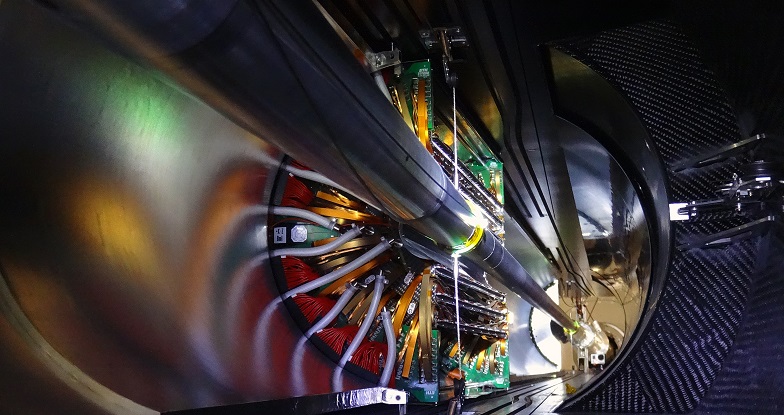
AIDA-2020 to run until 2020
Daniela Antonio (CERN), 26/11/2018

CMS Pixel Detector, Image credit: CMS
AIDA-2020 has been granted a 12-month extension by the European Commission. The AIDA-2020 management requested this extension because of delays to some planned activities, caused by unforeseen external circumstances, and because of the significant added value some Work Packages would find by widening their scope. The extension was accepted and signed in July of 2018 and the project will now end on 30 April of 2020, when a European Strategy Update for Particle Physics will be defined.
Because of the numerous interconnections between Work Packages, the 12-month extension spans the entire project. It will allow for the completion of any delayed deliverables and, in same cases, for further works that would significantly contribute to their impact. It will also ensure that the integrating activities of AIDA-2020 could serve the European particle physics community until the definition of new strategic guidelines for the development of detectors for particle physics and related fields.
The continuation of AIDA-2020 is made possible by extending the use of the available EC funds over a longer period, and by a continued provision of matching funds. Furthermore, DESY and CERN will continue to provide access to their test beams - except for the technical shutdown periods - free of charge, even after the allocated EC funding for user support has been used.
In conclusion, the main contractual changes are:
- The project duration is to be extended by one year, until 30 April 2020;
- The third (and final) periodic reporting will take place at the end of the project;
- A number of deliverables and milestones were rescheduled;
- At the end of the 4th year, the Consortium will provide information on the cumulative expenditure since the start of the project to the European Commission.
Work Packages to be rescheduled
Nine deliverables (out of 81) have been delayed due to unforeseen technical and organisational issues, such as delays in the hiring process, facility availability; and infrastructure failure and repair.
On the other hand, for a number of activities that are on schedule, deliverables have been postponed to allow for further work that could benefit the project. This continuation into a fifth year is reflected in the enhanced scopes and wider usage of these deliverables. As an example, for the WP5 - Data acquisition system for beam tests, while the system is already in use in combined tests, an extension would provide opportunity to support and report on the integration of further systems; for WP6 - Novel high voltage and resistive CMOS sensors, the rescheduled deliverable will now address not only feasibility of technology, but qualification of devices for HEP use.
